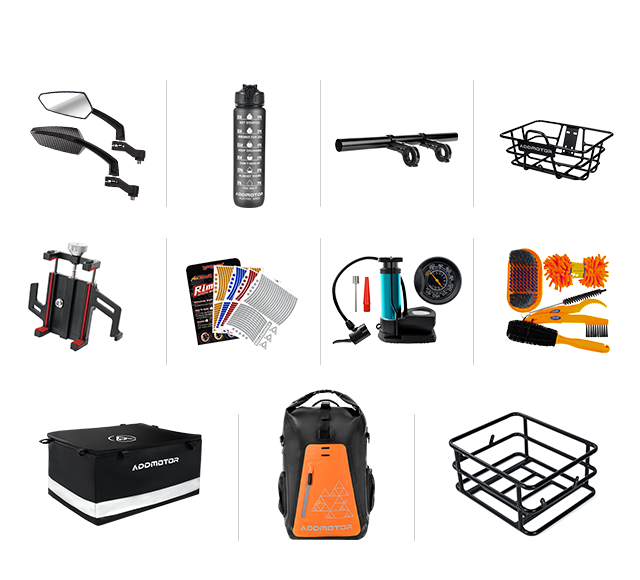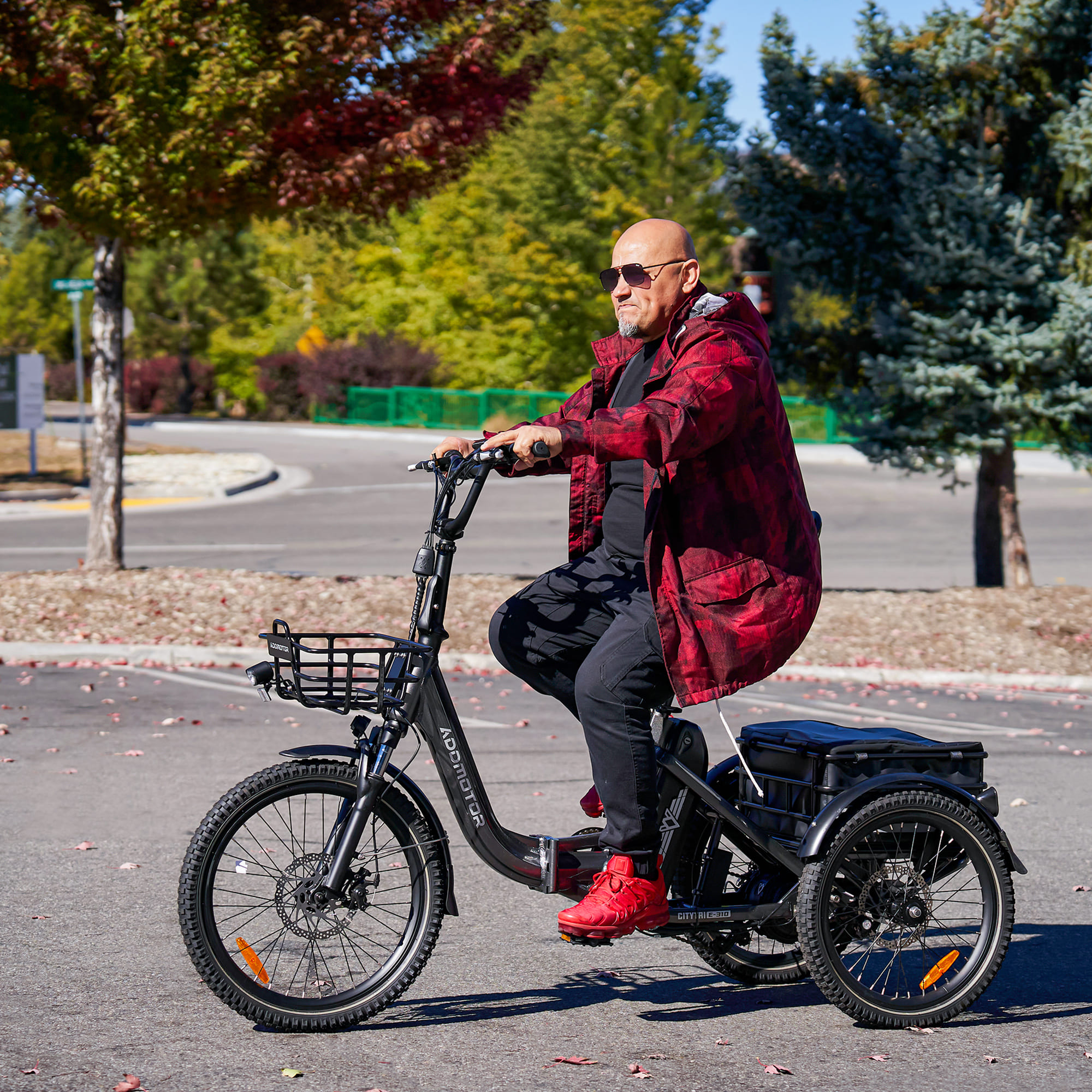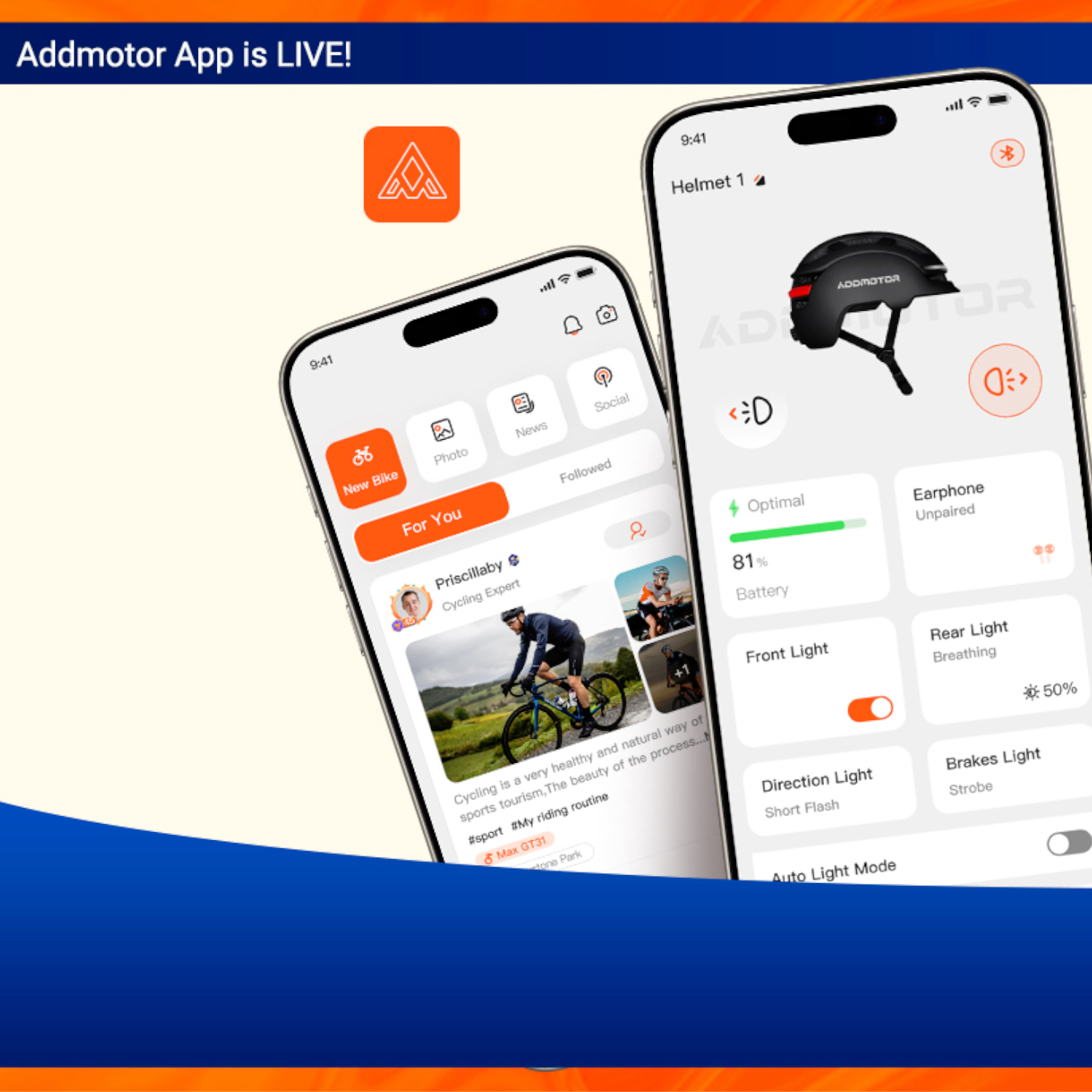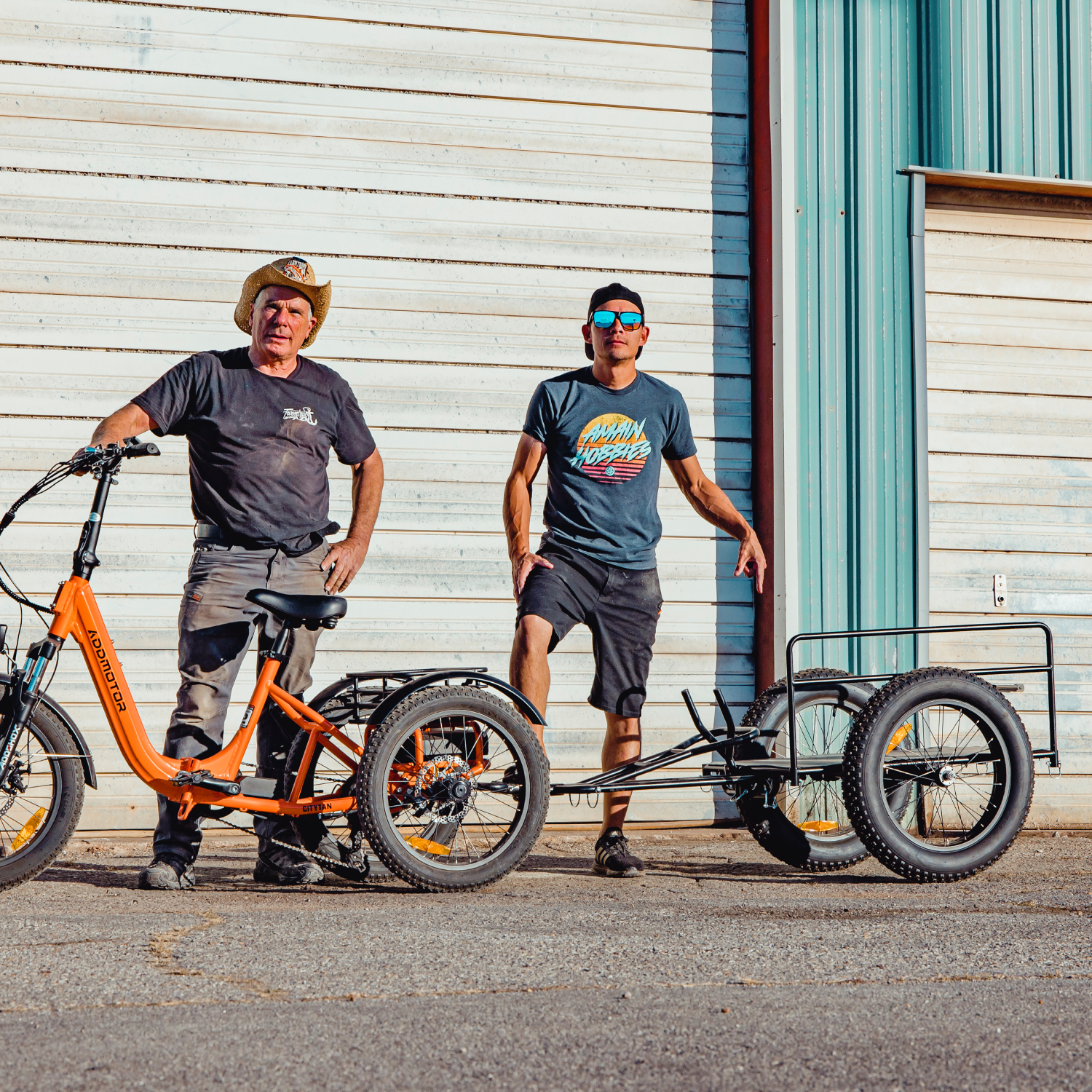The Latest Regulations for Electric Bikes in Popular U.S. States
By Addmotor | 04 January 2023 | 1 Comments
Over the past few years, electric bikes, or "e-bikes," have skyrocketed in popularity. Most likely, you've seen one of those zooming past you on the street. Perhaps you've even ridden one yourself. Considering how well-liked bike-share programs have become, e-bikes appear to be a fad that won't go away anytime soon.
The United States is a sizable nation so e-bike categories and categorizations are becoming more widespread. While e-bikes are currently classified according to three standard classifications in 36 states, others still employ a non-tiered system. Particularly in terms of how they govern e-bikes, not every state has the same regulations.
We've compiled all the relevant rules and regulations for a few major states so you can easily know what will be expected of you at a glance. If you don't follow these e-bike restrictions, you risk receiving some fairly costly fines and penalties. Let's get going!
We should emphasize that e-bike legislation in the US follows a broad structure before getting into the specifics of each state. No matter what state you live in, there are some things you should look into. Your state probably has some regulations on things like required helmet use, speed limits, and minimum age requirements.
It is also essential that the Federal Consumer Product Safety Act defines e-bikes, on which several states have based their regulations. This clarifies what the government deems to be an electric bicycle. The definition is a “low-speed electric bicycle” with fully operable pedals and a maximum speed of 20 miles per hour when being powered by the motor only (no pedaling). According to the Product Safety Act, the motor can only produce power that is less than or equal to 750 watts.
The amazing thing about the Addmotor e-bikes is that they all meet the criteria outlined above and are typically Class 2 electric bikes with a 48V battery and 750W motor that let you go at a top speed of up to 20 mph with or without pedaling. When dividing up electric motorcycles into three categories, many states use this system. Let's quickly review the classification.
Class 1: The Class 1 electric bike simply assists while you pedal and shuts off when you reach 20 mph. It is perfect for bike lanes, bike paths, roads, and other places where a regular bike would be appropriate.
Class 2: The Class 2 electric bike has a throttle that gives a boost without using the pedals and stops helping at 20 mph.
Class 3: The Class 3 electric bike has a speedometer and only provides assistance up to 28 mph, making it a great option for commuters. Due to the fact that riders still prefer to pedal, the most common bikes fall into Class 1 or Class 3.
Although not all states employ these designations, several of them have embraced them whole or partially. This offers some much-needed uniformity between states for stressed-out e-bike riders who just want to ride!
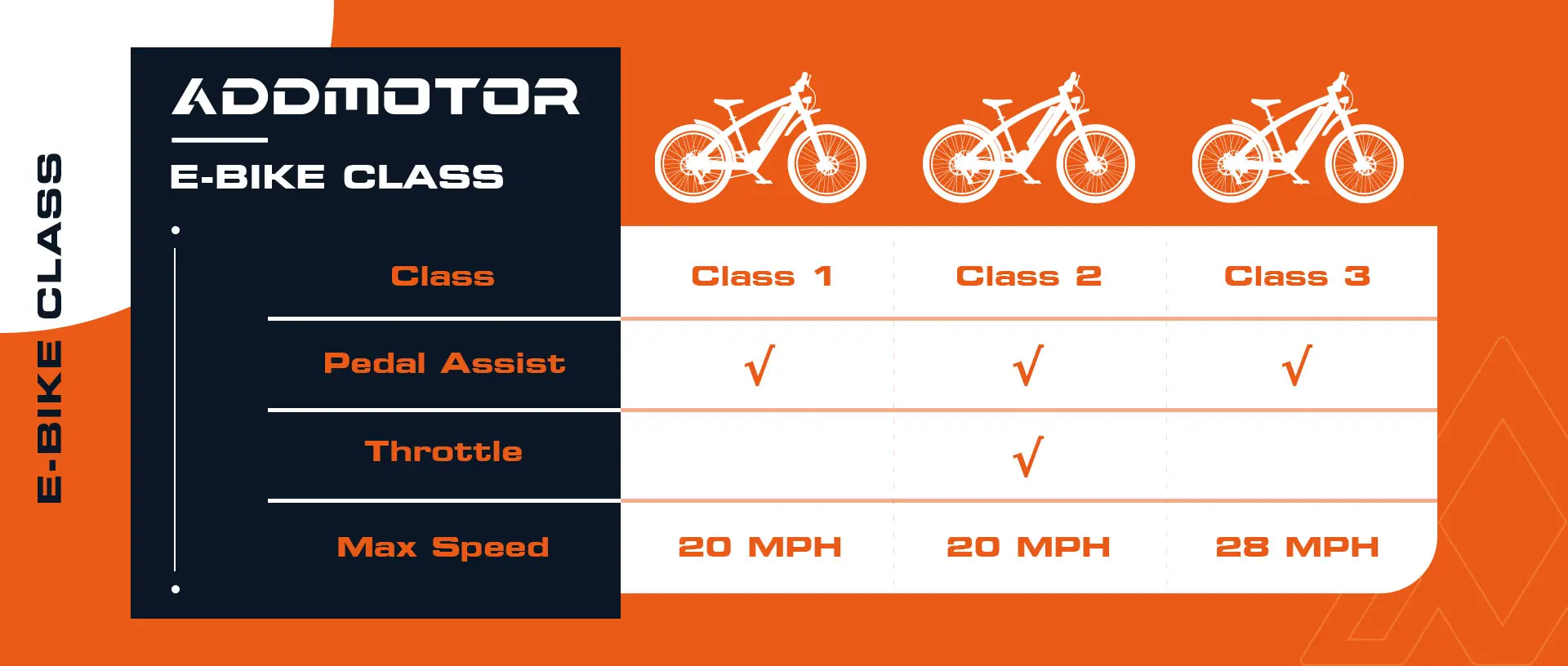
E-Bikes Laws In California
-Electric bikes are exempt from motor vehicle registration, licensing, and insurance regulations because they are not regarded as motor vehicles.
-Three e-bike classes based on pedal assistance; bike class must be visibly stated on the frame
Rules for a Class 3 Electric Bicycle:
-Those under the age of 16 may only be a passenger; they may not ride.
-A helmet must be worn while riding.
1. There is no need for a license or registration.
2. 3 classes of electric bikes
3. Maximum speed for classes 1 and 2 is 20 MPH.
4. Maximum speed for class 3 is 28 MPH.
5. Class 3 e-bikes require a minimum rider age of 15
6. Bike path permission on a city-by-city basis
1. Electric bikes are exempt from motor vehicle registration, licensing, and insurance regulations.
2. Three e-bike classes based on pedal assistance; bike class must be visibly stated on the frame
3. Max speed of 20 MPH
4. No minimum age to ride the bike; riders under 16 must wear a helmet
1. No licensing or registration required
2. 3 classes of e-bike
3. Max speed of 20 MPH for classes 1 & 2
4. Max speed of 25 MPH for class 3
5. Regulations for Class 1 and Class 2 e-bikes:
-Have access to some bike routes that are connected to or located next to roadways -Have access to roads with speed limits of 30 mph or less, including bike lanes.
-May carry passengers.
-Must ride a single file.
E-bike Laws in Pennsylvania
1. The e-bike motor is under 750w, can travel at a top speed of 20 mph when powered solely by the motor source, weighs no more than 100 lbs, and has working pedals.
2. The registration, licensing, and insurance requirements that apply to motor vehicles do not apply to e-bikes.
3. There is no need for helmets.
4. An e-bike may not be operated by anyone under the age of sixteen.
5. Permitted wherever bikes are
These are some laws that you need to abide by if you have an electric bike or if you are planning to buy one anytime soon.
_1672130721.webp)
FAQs
In certain states, using an ebike on a sidewalk or public road is prohibited. The same regulations and traffic laws apply to e-bikes and automobiles. E-bikes are permitted on sidewalks as well as roadways in some states. Nevertheless, be aware that certain states might place restrictions on which e-bike classes can use the sidewalk. To stay safe and on the right side of the law, make sure you follow these rules.
It's always a good idea to stay updated on e-bike regulations, and now that you know more about the regulations in some of the well-known U.S. States, you can make better decisions.
The United States is a sizable nation so e-bike categories and categorizations are becoming more widespread. While e-bikes are currently classified according to three standard classifications in 36 states, others still employ a non-tiered system. Particularly in terms of how they govern e-bikes, not every state has the same regulations.
We've compiled all the relevant rules and regulations for a few major states so you can easily know what will be expected of you at a glance. If you don't follow these e-bike restrictions, you risk receiving some fairly costly fines and penalties. Let's get going!
General E-bike Laws in the United States
We should emphasize that e-bike legislation in the US follows a broad structure before getting into the specifics of each state. No matter what state you live in, there are some things you should look into. Your state probably has some regulations on things like required helmet use, speed limits, and minimum age requirements.
It is also essential that the Federal Consumer Product Safety Act defines e-bikes, on which several states have based their regulations. This clarifies what the government deems to be an electric bicycle. The definition is a “low-speed electric bicycle” with fully operable pedals and a maximum speed of 20 miles per hour when being powered by the motor only (no pedaling). According to the Product Safety Act, the motor can only produce power that is less than or equal to 750 watts.
The amazing thing about the Addmotor e-bikes is that they all meet the criteria outlined above and are typically Class 2 electric bikes with a 48V battery and 750W motor that let you go at a top speed of up to 20 mph with or without pedaling. When dividing up electric motorcycles into three categories, many states use this system. Let's quickly review the classification.
Classification of E-Bikes
E-bikes are divided into three different categories. To identify how e-bikes should be used in accordance with local e-bike rules, classes were created. The three-class system for electric bikes is currently in use in 36 states across the United States. Within their three-tier systems, states may change a few specifics, but the most are relatively similar. The classes consist of:Class 1: The Class 1 electric bike simply assists while you pedal and shuts off when you reach 20 mph. It is perfect for bike lanes, bike paths, roads, and other places where a regular bike would be appropriate.
Class 2: The Class 2 electric bike has a throttle that gives a boost without using the pedals and stops helping at 20 mph.
Class 3: The Class 3 electric bike has a speedometer and only provides assistance up to 28 mph, making it a great option for commuters. Due to the fact that riders still prefer to pedal, the most common bikes fall into Class 1 or Class 3.
Although not all states employ these designations, several of them have embraced them whole or partially. This offers some much-needed uniformity between states for stressed-out e-bike riders who just want to ride!

E-Bikes Laws In California
-Electric bikes are exempt from motor vehicle registration, licensing, and insurance regulations because they are not regarded as motor vehicles.
-Three e-bike classes based on pedal assistance; bike class must be visibly stated on the frame
Rules for a Class 3 Electric Bicycle:
-Those under the age of 16 may only be a passenger; they may not ride.
-A helmet must be worn while riding.
E-Bikes Laws In Texas
1. There is no need for a license or registration.
2. 3 classes of electric bikes
3. Maximum speed for classes 1 and 2 is 20 MPH.
4. Maximum speed for class 3 is 28 MPH.
5. Class 3 e-bikes require a minimum rider age of 15
6. Bike path permission on a city-by-city basis
E-Bikes Laws In Florida
1. Electric bikes are exempt from motor vehicle registration, licensing, and insurance regulations.
2. Three e-bike classes based on pedal assistance; bike class must be visibly stated on the frame
3. Max speed of 20 MPH
4. No minimum age to ride the bike; riders under 16 must wear a helmet
E-Bikes Laws In New York
1. No licensing or registration required
2. 3 classes of e-bike
3. Max speed of 20 MPH for classes 1 & 2
4. Max speed of 25 MPH for class 3
5. Regulations for Class 1 and Class 2 e-bikes:
-Have access to some bike routes that are connected to or located next to roadways -Have access to roads with speed limits of 30 mph or less, including bike lanes.
-May carry passengers.
-Must ride a single file.
E-bike Laws in Pennsylvania
1. The e-bike motor is under 750w, can travel at a top speed of 20 mph when powered solely by the motor source, weighs no more than 100 lbs, and has working pedals.
2. The registration, licensing, and insurance requirements that apply to motor vehicles do not apply to e-bikes.
3. There is no need for helmets.
4. An e-bike may not be operated by anyone under the age of sixteen.
5. Permitted wherever bikes are
These are some laws that you need to abide by if you have an electric bike or if you are planning to buy one anytime soon.
_1672130721.webp)
FAQs
Do e-bikes need a license in the USA?
Considering Ebikes to be low-speed electric bikes, they are exempt from registration and licensing requirements. Electric bikes may be driven on highways and bike lanes, but not on sidewalks. Local limitations, however, might be present.Are throttle electric bikes legal in the US?
An e-bike may be powered only by the motor (a "throttle-assist" e-bike) or by the motor and human power (a "pedal-assist" e-bike), according to federal law. However, pedal-assist e-bikes are not included in the maximum speed restrictions; only throttle-assist e-bikes are.Is e-Bike allowed on the highway?
Only barangay roads, national highway crossings, and bicycle lanes are open to L1a cars. If you upgrade to an L1b or L2a-class e-bike or e-moped, you can continue to go along local roads' outermost stretches and cross major thoroughfares and interstates.What e-Bikes qualify for tax credit?
Class 1 electric bikes, class 2 electric bikes, or class 3 electric bikes must meet the following requirements to be considered eligible eBikes: less than 750 watts of electric power, pedals that can move the vehicle forward, and a saddle or seat for the rider.
Final Words
In certain states, using an ebike on a sidewalk or public road is prohibited. The same regulations and traffic laws apply to e-bikes and automobiles. E-bikes are permitted on sidewalks as well as roadways in some states. Nevertheless, be aware that certain states might place restrictions on which e-bike classes can use the sidewalk. To stay safe and on the right side of the law, make sure you follow these rules.
It's always a good idea to stay updated on e-bike regulations, and now that you know more about the regulations in some of the well-known U.S. States, you can make better decisions.
Recently Reviews
Read MoreLeave a Reply
Your email address will not be published.Required fields are marked. *
Latest Stories

